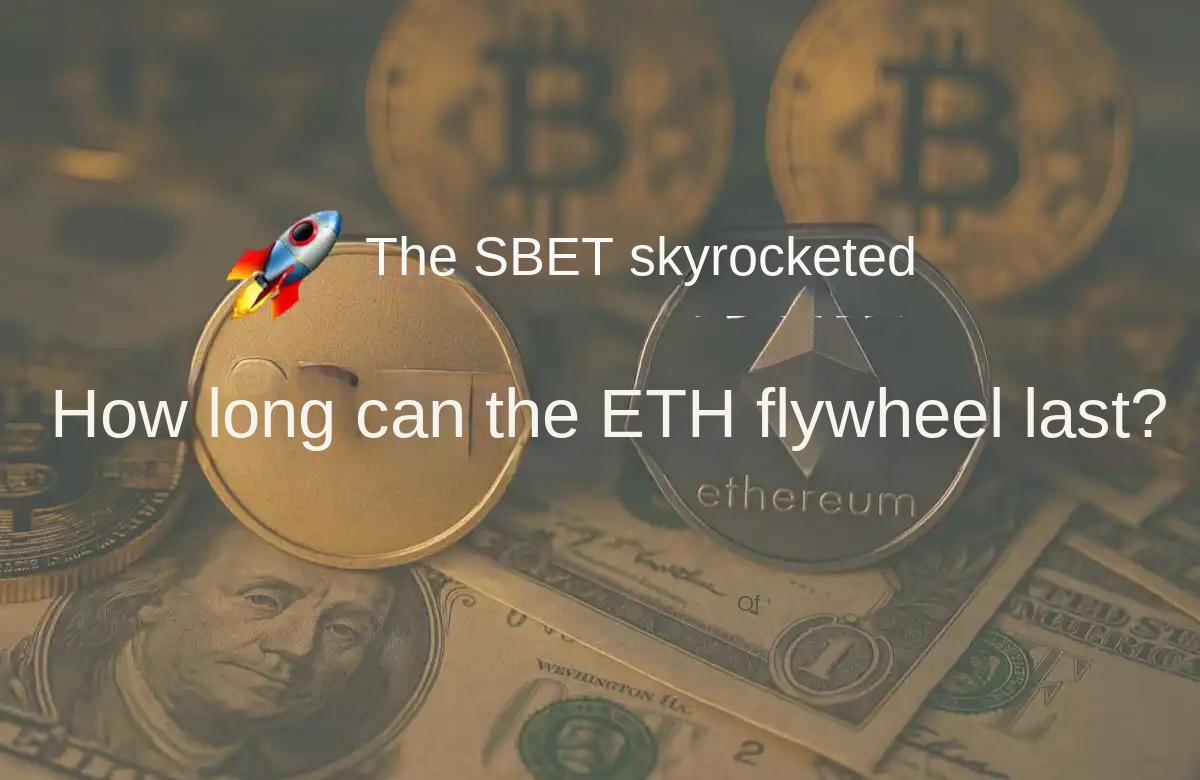Has the Crypto Industry Entered the Mainstream Spotlight? Top Influencer 'Little Lin Says' Achieves 5 Million Views in One Day
Author: Pan Zhifu
Xiao Lin's groundbreaking moment made the "crypto industry" a "popular topic".
On July 15, well-known financial and educational content creator "Xiao Lin Talks" released a video titled "Understanding Stablecoins in One Breath" on mainstream platforms such as YouTube, Bilibili, Douyin, and Toutiao. Within 24 hours of its release, the video had already surpassed "five million" views. This marked the first time that cryptocurrency content had entered the public eye in a professional and neutral manner, delving into the background, significance, and relevant regulations of stablecoins layer by layer. In an educational format, more users were able to understand the mysteries behind stablecoins.

First, let's review the key points of Xiao Lin's video content:
1. The dominance of the US Dollar stablecoin, with value concentrated at the "touchpoint".
In 2024, the trading volume of stablecoins surpassed the annual payment volume of Visa and Mastercard for the first time. While mainstream USD-pegged stablecoins (such as USDT, USDC) use the US Dollar or US Treasury bonds as reserve assets, the actual commercial value is mainly concentrated at the distribution level. In 2024, Circle alone paid $9 billion in channel distribution fees to Coinbase, accounting for 54% of its total revenue. This data clearly illustrates the distribution characteristics of the industry value chain: the true commercial dominance lies in the hands of platforms with user outreach capabilities.
2. Compliance has become a watershed for the industry, bringing a "trust premium".
The video points out that the early negative impressions of cryptocurrency related to money laundering and its perceived speculative nature are becoming key barriers to mainstream adoption. In this regard, Circle's compliance practices provide a successful model—it has successfully penetrated the US mainstream financial market. With the advancement of the Infrastructure Bill, the Hong Kong stablecoin regulations, and the EU's Mica proposal, this "compliance premium" is reshaping the industry's competitive landscape.
3. The stablecoin represents a geopolitical financial game.
The video highlights that the US's regulatory stance on stablecoins is essentially an extension of the US Dollar's hegemony into the digital age. This game dynamic has prompted traditional financial institutions to join the space: banks are concerned about their payment settlement business being eroded, while tech giants eye the financial infrastructure dividend. Of particular note is that regulatory bodies currently strictly limit stablecoins to the payment field and maintain a high level of vigilance toward their derivative financial services. This policy orientation will continue to influence the industry's evolutionary path.
The significance of this groundbreaking video lies in providing us with a rare "external perspective" — through the feedback of 5 million ordinary viewers and the high-frequency keywords in the comments section, we can see the mainstream market's real perception and expectations of the cryptocurrency industry — compliance anxiety and utility questioning.
1. Cryptocurrency Compliance and User Asset Security
In the video mentioned by Little Lin, exchange compliance and user asset security occupied a significant portion, with a specific focus on OKX. For the average user, the core concern regarding cryptocurrency is not "can it be profitable" but "is my money safe." In the video's comment section, a large number of non-crypto users' comments also reflect concerns about regulatory compliance, fund security, and the risk of a Ponzi scheme. These concerns are the hurdles the industry must overcome to gain widespread acceptance.
After all, the lessons of history are clear: in 2014, Japan's Mt. Gox lost 850,000 bitcoins due to a hack and mismanagement; in 2022, FTX collapsed due to misappropriation of user funds, wiping out its multi-billion-dollar market value overnight. These events not only shattered industry confidence but also had a significant impact on the market:
• In early 2023, the total cryptocurrency market cap was around $800 billion, far below the 2021 peak of $3 trillion.
• In 2023, the total cryptocurrency funding was only $9.5 billion (Messari data), a 69% decrease compared to 2022 ($30.7 billion), reaching a new low since 2020.
• In 2023, the bank crisis (Silvergate, Signature closures) led to a breakdown in fiat channels: cryptocurrency companies faced increased difficulty in USD deposits and withdrawals.
This decline in liquidity, funding contraction, retail exodus, and the market entering a "dark winter" all stem from the industry's painful price paid for the lack of regulation. Embracing cryptocurrency compliance proactively is an even more challenging path as it entails high costs.
The video particularly emphasized the concept of "Proof of Reserves (PoR)." Compared to the traditional reserve model of financial institutions and multi-layered custody intermediary models, clear Proof of Reserves (PoR) is akin to a listed company's balance sheet and is even more real-time and transparent. There is a lot of valuable hidden information here, such as the proportion of mainstream assets, which can be equated to the proportion of core assets, and the asset reserve ratio, which can serve as an effective indicator of solvency.
Monthly Proof of Reserves disclosure has now become a standard practice for mainstream trading platforms. Observing OKX's practices over the past two years, it is evident that, in addition to meeting basic disclosure requirements, they have established an on-chain monitoring system with real-time tracking of suspicious addresses and risk alert capabilities. From OKX's "CEX+Wallet+Pay" integrated strategy, it is clear that this is their commitment to global user security and product experience. Similarly, we can also see that Circle has gained recognition in the US market by adhering to compliance. This is a long-term credibility endorsement, addressing investors, users, and regulators.

2. Global Stablecoin Payments: Just the Beginning, Application is the Endgame
Little Lin mentioned a key point in the current development of stablecoins when discussing the "global stablecoin payment system": although regulators around the world still primarily focus on the payment characteristics of stablecoins, their future potential extends far beyond. With the legislative process around stablecoins accelerating, global giants are actively making moves:
• PayPal launched PYUSD in August 2023, becoming the first payment giant to issue a stablecoin;
• Internet companies such as Ant Group and JD.com are actively applying for a Hong Kong stablecoin license;
• Traditional financial institutions like Standard Chartered Hong Kong and CMBC are also exploring stablecoin businesses through joint ventures or sandbox testing.
Currently, there are more than 40 companies applying for a Hong Kong stablecoin license. JPMorgan CEO Jamie Dimon also expressed his lack of understanding of the appeal of stablecoins, but he will not stand idly by. The industry is currently at a crucial turning point: while major institutions are vying for the right to issue stablecoins, the market as a whole has not yet formed a unified understanding of the true value and development path of stablecoins.
As the issuance threshold lowers, true differentiation will be reflected in the ability to build commercial scenarios. For example, in cross-border payments and e-commerce partnerships, using stablecoins to replace traditional bank remittances (saving 3-5% transaction fees); promoting merchant adoption: driving stablecoins to be used in scenarios such as tourism, gaming, and e-commerce; increasing DeFi participation and lowering the barriers to entry; and crucially, establishing compliance channels: bridging fiat currency exchanges through licenses to make stablecoins truly "usable."
This is also why Meta plans to embed payment functionality through WhatsApp to create stablecoin applications in social scenarios; Coinbase focuses on building a digital wallet with social and gaming attributes; and OKX, starting from user demand scenarios, focuses on digital currency payments and blockchain integration.
OKX has established a compliant channel for real-time exchange between the US Dollar and USDC through its partnership with Circle, while simultaneously optimizing the fiat currency inflow and outflow processes with banks. Users can complete stablecoin transfers through the OKX Pay app or make payments at POS terminals. When users can use stablecoins for various scenario payments and easily exchange them with fiat currencies, the commercial value of stablecoins truly comes to light.
It is obvious that stablecoin-related companies are accelerating collaboration to build an ecosystem, forming a multi-collaborative body in issuance technology, ecosystem applications, and distribution channels, engaging in intense competition. For example, the collaboration between Circle and Coinbase has established the issuance and distribution system of USDC; the Global Dollar Network has partnered with 30+ industry-leading companies, including major U.S. trading platform Robinhood, cryptocurrency exchange Kraken, cryptocurrency financial services company Galaxy Digital, and more.
Recently, the Global Dollar Network (GDN) announced the issuance of the USDG stablecoin in the European Union and declared OKX as a core partner. This is currently the "only" stablecoin after USDC that has obtained regulatory approval in both Singapore and the European Union, covering over 3 billion users in 450+ countries/regions.

Conclusion: Long-Termism Behind Breaking the Loop
Compliance is becoming a ticket for entry, and the use case determines the ceiling: when ordinary users can easily use stablecoins for cross-border payments and daily consumption as shown in the video, cryptocurrency can truly integrate into real life.
Every milestone in the industry's development has not come easily. Every breaking-the-loop moment in the cryptocurrency industry, every individual or brand that has reached the mainstream view, embodies long-term persistence and effort. Every step they take is carefully planned, a bold attempt, and a firm belief. This is the reason they have come this far, standing before us as representatives of cryptocurrency builders.
Xiao Lin said that this breaking-the-loop video is not only the beginning of a financial industry innovation by stablecoins but also a epitome of the long-term efforts of cryptocurrency industry builders. I believe this is not just a simple moment of being "seen."
This article is a contribution and does not represent the views of BlockBeats.
Welcome to join the official BlockBeats community:
Telegram Subscription Group: https://t.me/theblockbeats
Telegram Discussion Group: https://t.me/BlockBeats_App
Official Twitter Account: https://twitter.com/BlockBeatsAsia
 Forum
Forum OPRR
OPRR Finance
Finance
 Specials
Specials
 On-chain Eco
On-chain Eco
 Entry
Entry
 Podcasts
Podcasts
 Activities
Activities








